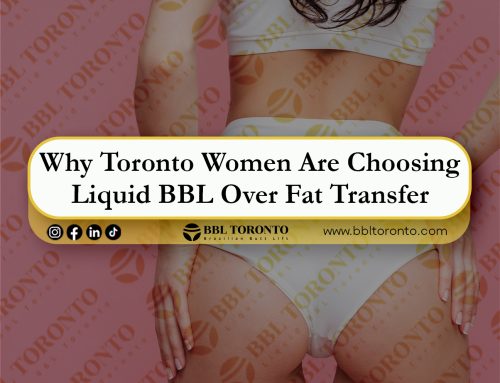Who Should Avoid Liquid BBL? Medical Contraindications and Precautions
The tendency for an advanced and sculptured ghost has made many people looking for beauty methods that provide effective and minimal offensive results. Among these, the Brazilian liquid hip elevator (BBL fluid) has gained popularity as a non -surgical alternative to reinforcing traditional hips. Using injectable fillers such as hyaluronic acid or L-Lactic poly acid (sculptra), patients can achieve advanced volume and contour with minimal hip failure.
Despite many benefits, liquid BBL is not suitable for everyone. Some medical conditions, lifestyle factors, and psychological considerations require careful evaluation to determine the candidacy. Continuing treatment, despite contraindications, can lead to complications, satisfactory results, or even serious health risks.
This comprehensive article examines the medical prohibitions and precautions that determine who should prevent liquid BBL. Whether you are a forward -looking patient or a health care provider, understanding these factors is very important to ensure safety and achieve the best possible results.
What is the BBL liquid? A general review
BBL fluid is a method designed to enhance the hips by injecting specialized fillers to add volume, improvement and creating an area without surgery. Two common fillers are:
- Hyaluronic acid (HA): A substance that is naturally present in the body that provides volume and hydration. It can be solved if necessary and provides a reversible option.
- Poly-Lactic acid: A biological filler that stimulates collagen production over time, resulting in a gradual and natural increase.
Unlike surgery BBL, which includes liposuction and fat transfer, BBL fluid does not require general incision or anesthesia, reducing the risks and time of recovery significantly. Patients can usually return to daily activities within 1 to 3 days.
The main benefits of liquid BBL
- Minimum aggressive: No need for surgery or failure.
- Natural Results: Custom Size and Contour.
- Safety: Lowest risk than surgical options.
- Reversible: HA fillers can be solved if dissatisfied.
- Quick Method: Usually it is completed within 60-90 minutes.
Despite these benefits, this method has risks that can be strengthened if inappropriate candidates.
Why understanding the contraindications
In the field of aesthetic medicine, the patient’s safety is important. Each procedure has certain contraindications – medical reasons that make treatment indescribable or dangerous for specific people.
Understanding contraindications helps:
Prevent serious complications: including infection, allergic reaction and poor recovery.
Ensure patient satisfaction: By preventing unrealistic expectations and undesirable results.
Help providers for patient selection: Ensuring the right candidates in this method.
Promoting moral action: Prioritizing health over cosmetic desires.
Ignoring these factors not only endangers health but can lead to legal and ethical issues for physicians.
Medical Contraindications: Who should prevent liquid BBL?
Selection under liquid BBL requires a comprehensive medical evaluation. The following medical conditions and scenarios are considered contraindications, meaning that patients should prevent methods or delay to improve the conditions.
Active infections or skin conditions at the injection site
The presence of infections such as cellulite, abscesses, the prevalence of herpes of Simpelx, or other topical infections near or in the area of injection in question, is a severe contraindication.
Injecting fillers into infected or inflamed skin can:
Exacerbates the infection.
Bacteria systematically spread and cause serious complications.
It leads to poor filler integration and aesthetic failure.
Similarly, chronic skin diseases such as eczema, psoriasis, or pre -treatment dermatitis require stabilization.
Patient counseling: If you have infection or active skin lesions, tell your injector about any current skin problems and delay it.
Autoimmunal diseases and the suppression of the immune system
Autoimmune diseases such as lupus erythematosis, rheumatoid arthritis, scleroderma or sclerosis change the immune system and potentially affect the body’s response to fillers and recovery capacity.
Patients are possible in the treatment of immunosuppressive suppression (eg, corticosteroids, chemotherapy, biological):
Improve the recovery.
Be at greater risk for infections.
Make abnormal inflammatory reactions to fillers.
While some patients with stable autoimmune diseases may be cleared after medical advice for treatment, many are advised to prevent fluid BBL to reduce risks.
Blood Disorders and Clotting Abnormalities
Patients with coagulation such as hemophilia, thrombocytopenia, or patients with chronic anticoagulants such as warfarin, aspirin or direct oral anticoagulant (Doac) are at risk:
Excessive bleeding during injection.
Long bruising
The formation of a hematoma that can complicate the filling of the filler.
Blood thinner discontinuation may be necessary but should always be under the supervision of a physician. Without proper management, these patients are a poor candidate for BBL fluid.
Allergies to filler components
Allergies known to ingredients in skin fillers, including:
Hyaluronic acid (rare but possible).
Lidocaine, which is often mixed with fillers to relieve pain.
Other preservatives or additives.
Patients with such allergies endanger severe topical or systemic reactions, including anaphylaxis.
Allergy screening and medical history evaluation is essential. In uncertain cases, patch tests or injections may be performed.
Pregnancy and Breastfeeding
At present, there is insufficient information about the safety of skin fillers during pregnancy and lactation. The potential risks are unknown for the fetus or baby of the nurse.
As a result, cosmetics such as fluid BBL are contraindicated during these periods.
Patients are encouraged to postpone treatment after lactation.
Poor general health or chronic illness
People with poor medical conditions such as:
- Uncontrolled diabetes
- Severe cardiovascular disease
- Chronic respiratory conditions
- Severe obesity
It may endanger the wound healing and increase the risks of complications.
A comprehensive medical evaluation and customs clearance by a physician or primary care specialist is required before consider the liquid BBL.
Psychological conditions and unrealistic expectations
Patients with mental health disorders such as bodybuilding disorder (BDD) or unrealistic expectations may not be satisfied regardless of the outcome.
Performing cosmetics about these patients can lead to:
- Psychological distress
- Repeat steps by reducing efficiency.
- Ethical problems for doctors.
Referral to mental health professionals is recommended for evaluation and counseling.
History of wounds or extreme colloids
Patients susceptible to hypertrophic ulcers or colloids may experience abnormal skin responses after injection and lead to unpleasant results or complications.
While the fluid BBL is less invasive than surgery, filler injection can still cause native tissue reaction.
Consultation with a dermatologist is recommended.
The lifestyle and precautions of behavioral
Even if there are no absolute contraindications of medical use, some specific lifestyle habits and behaviors can increase risks or reduce therapeutic effectiveness.
Smoking
Smoking reduces blood flow, causes oxygen to the tissues and improves. This increases the risk:
- Infection
- Poor filler integration.
- Long bruising and swelling.
Patients are advised to quit smoking at least 2 weeks before and after surgery to optimize the results.
Use alcohol
Excessive alcohol consumption can impair immune function and interfere with blood clots and increase bruising risks.
It is recommended to limit alcohol before and after treatment.
Medications and supplements
Some medications and supplements affect the clotting and recovery, including:
- Steroids
- Nsaids (eg, ibuprofen)
- Herbal supplements such as ginkgo biloba, garlic and fish oil
It is very important to disclose all your medications and injector supplements.
Recent or future surgery
Timing is important. Recent surgery or plans for surgery soon after the BBL liquid cans:
It interferes with recovery.
Increase the risk of complications.
Coordination with all health care providers guarantees safe planning.
In the event of a disadvantage, risks and complications
Ignoring prohibition cases can lead to:
Infection
Injecting filler into infected or compromised skin can introduce bacteria and cause serious infections, abscesses or systemic disease.
Migration and filler nodes
Poor therapeutic responses may cause fillers to move or cause masses, resulting in asymmetry or discomfort.
Allergic reactions
From mild redness and swelling to severe anaphylaxis, allergic reactions pose significant risks.
The results of poor aesthetics
Patients with unrealistic expectations or basic health issues may experience dissatisfaction and need corrective methods.
Pre -processing screening and evaluation
A complete pre -treatment assessment includes the following:
- History of accurate medical and physical examination.
- Allergy test if necessary.
- Psychological assessment for mental health concerns.
- Discussion of realistic expectations and conscious consent.
Precautions during the action
Select experienced and licensed injectors.
Follow precise sterile protocols to prevent infection.
Use a variety of fillers and appropriate doses to suit individual needs.
Control the patient’s response during the operation.
Post -operative care and supervision
Patients should be about:
Symptoms of complications such as excessive swelling, pain or discoloration.
Proper care including cold compact and preventing intense activity.
Planning for follow -up appointments.
When looking for urgent medical care.
Other options for high -risk patients
- For inappropriate patients for liquid BBL, other options are:
- BBL surgery with complete medical discharge.
- Other non -invasive treatments of the body (eg, coolsculpting, radio frequency).
- Psychological counseling to worry about body image.
Liquid BBL offers a transformative option to boost hips but requires a careful patient selection. Understanding medical contraindications and lifestyle factors that need to be prevented is very important to ensure safety and satisfaction. Always consult with eligible experts and undergo a comprehensive screening before taking action.





